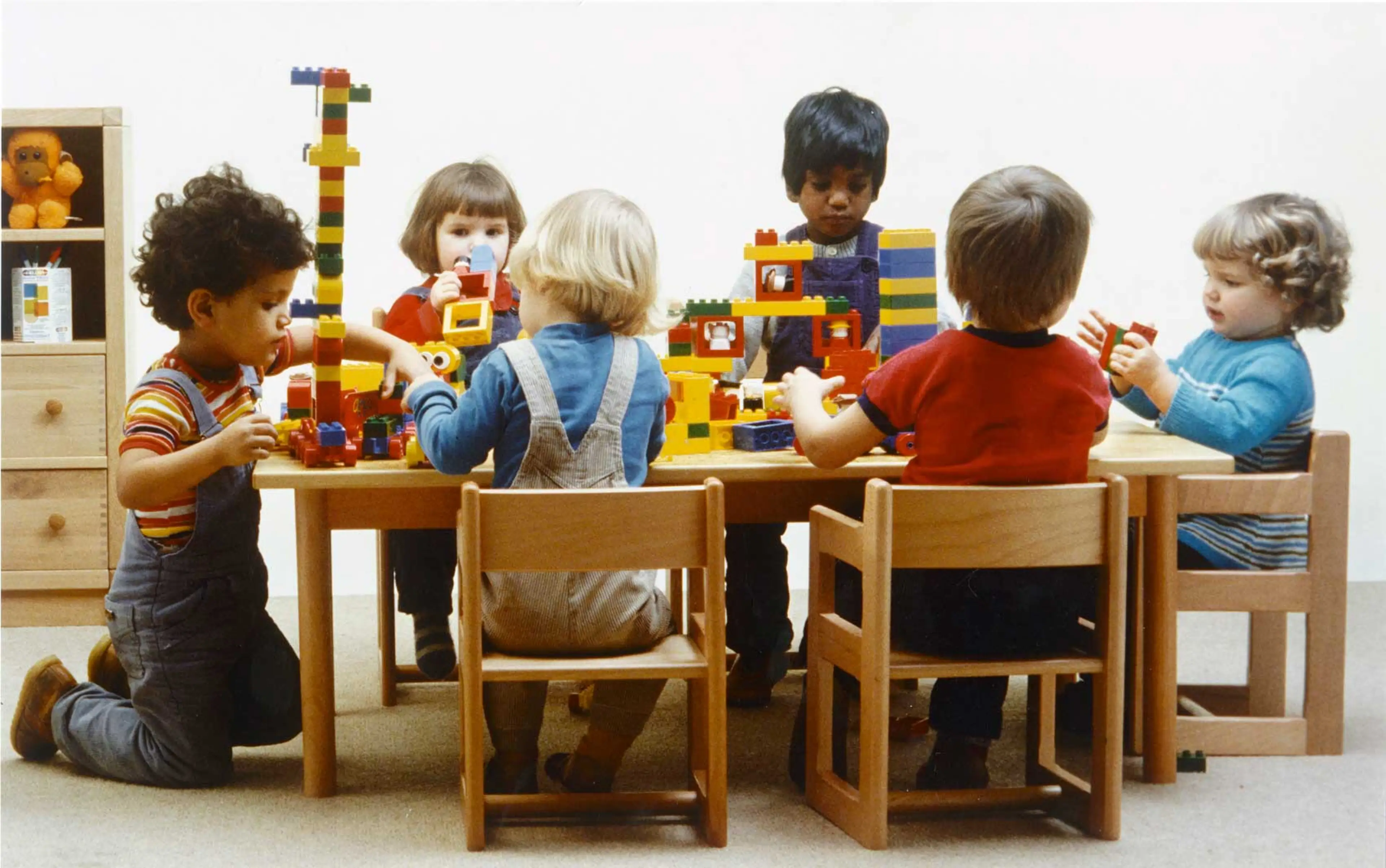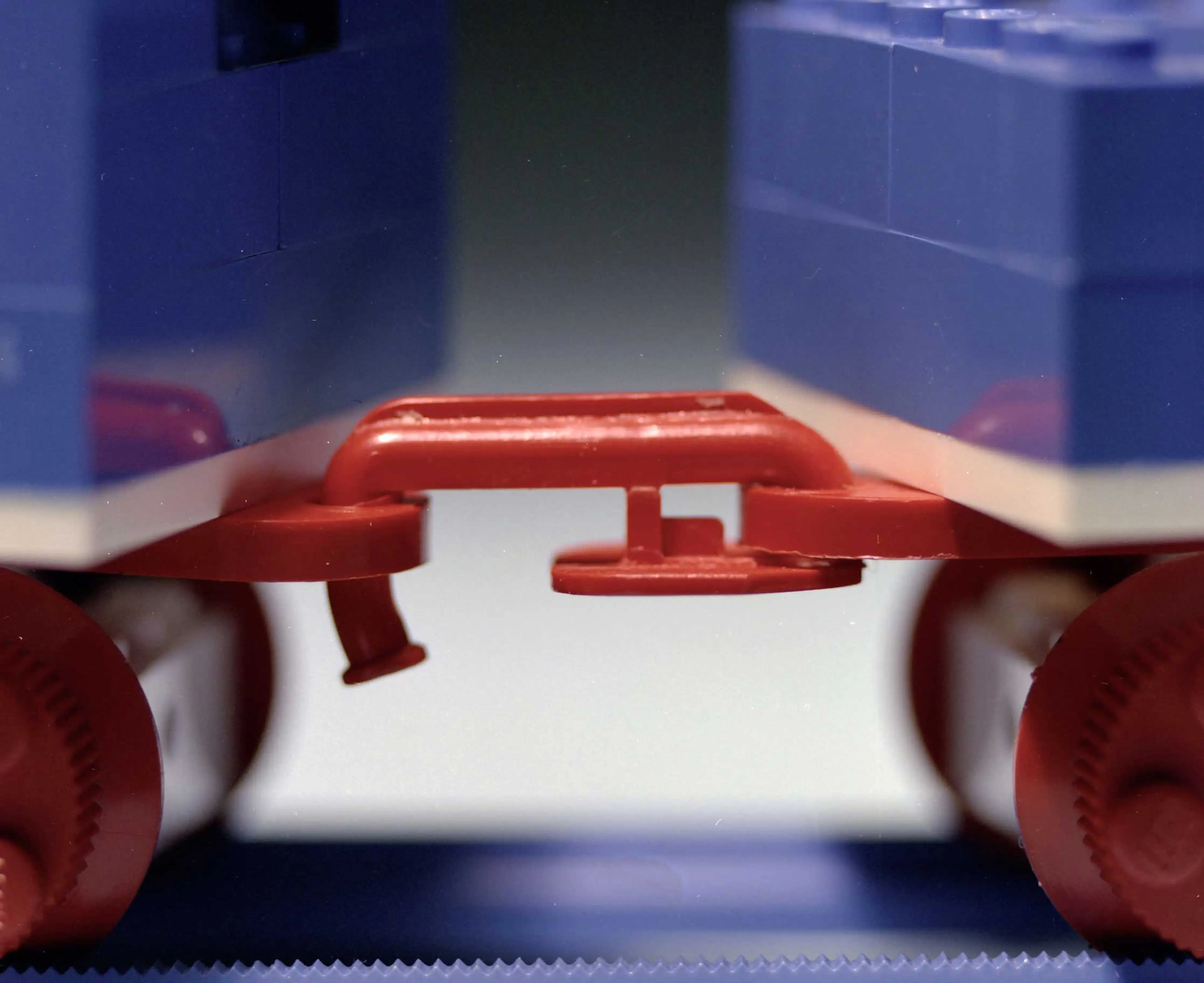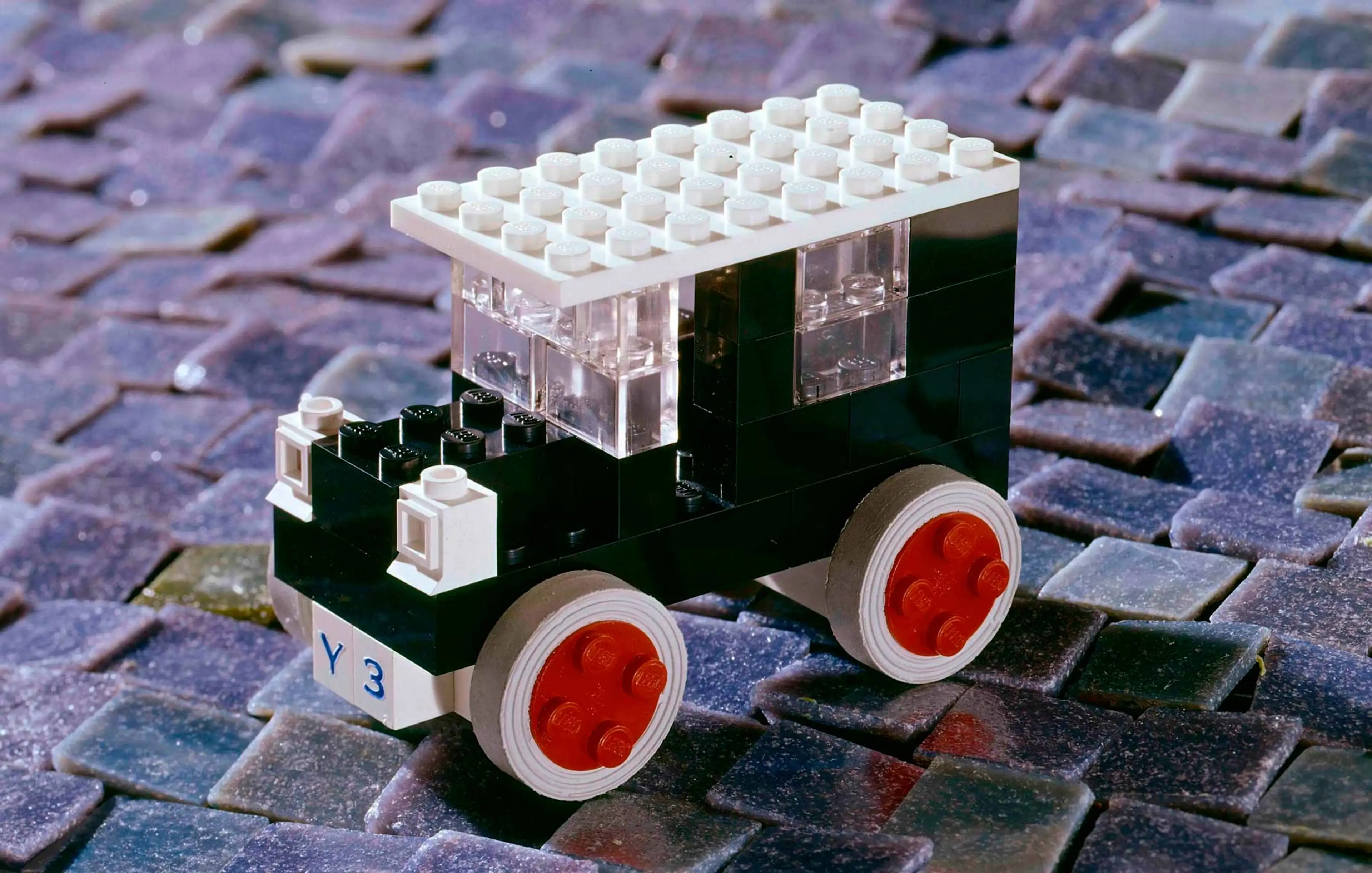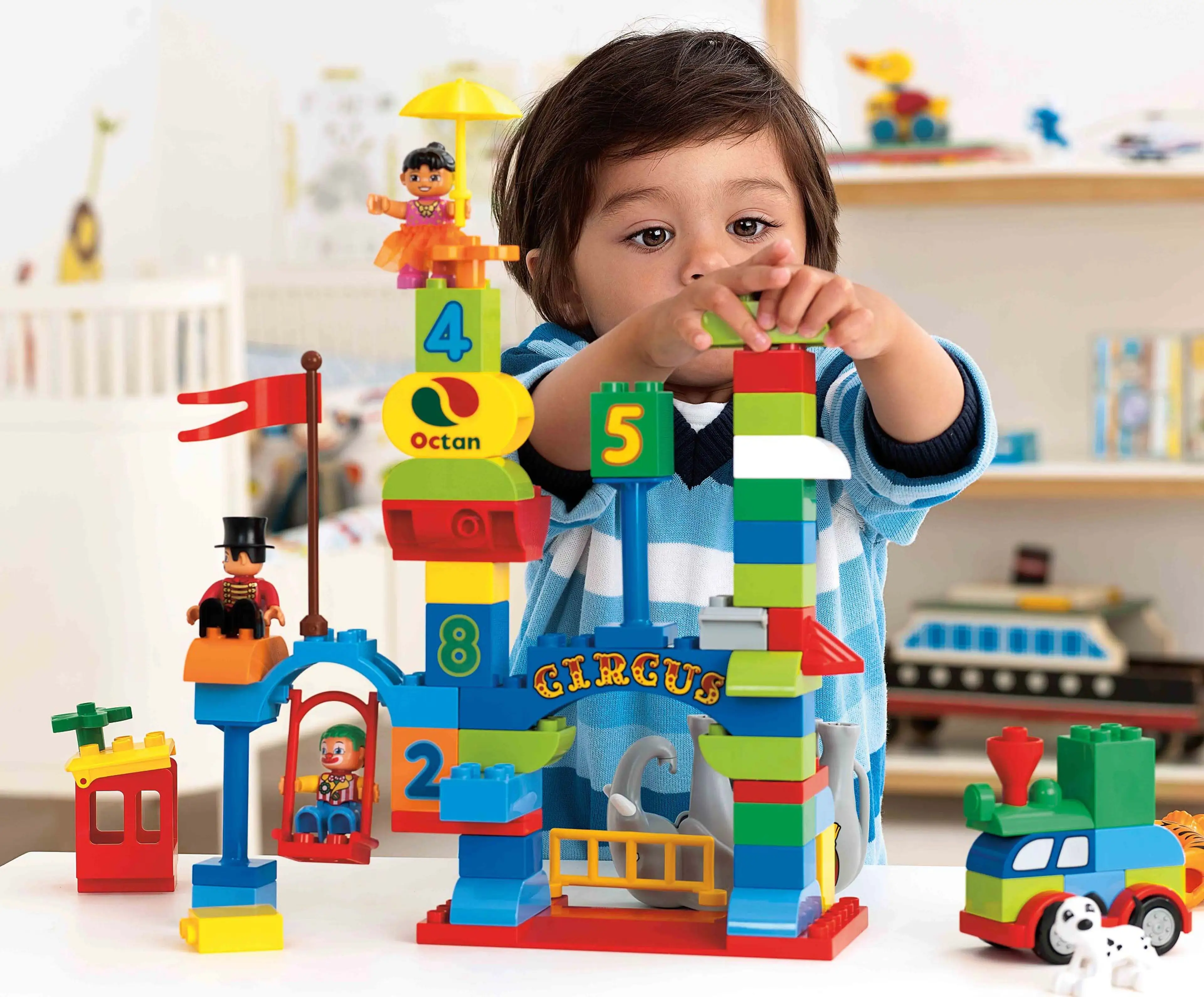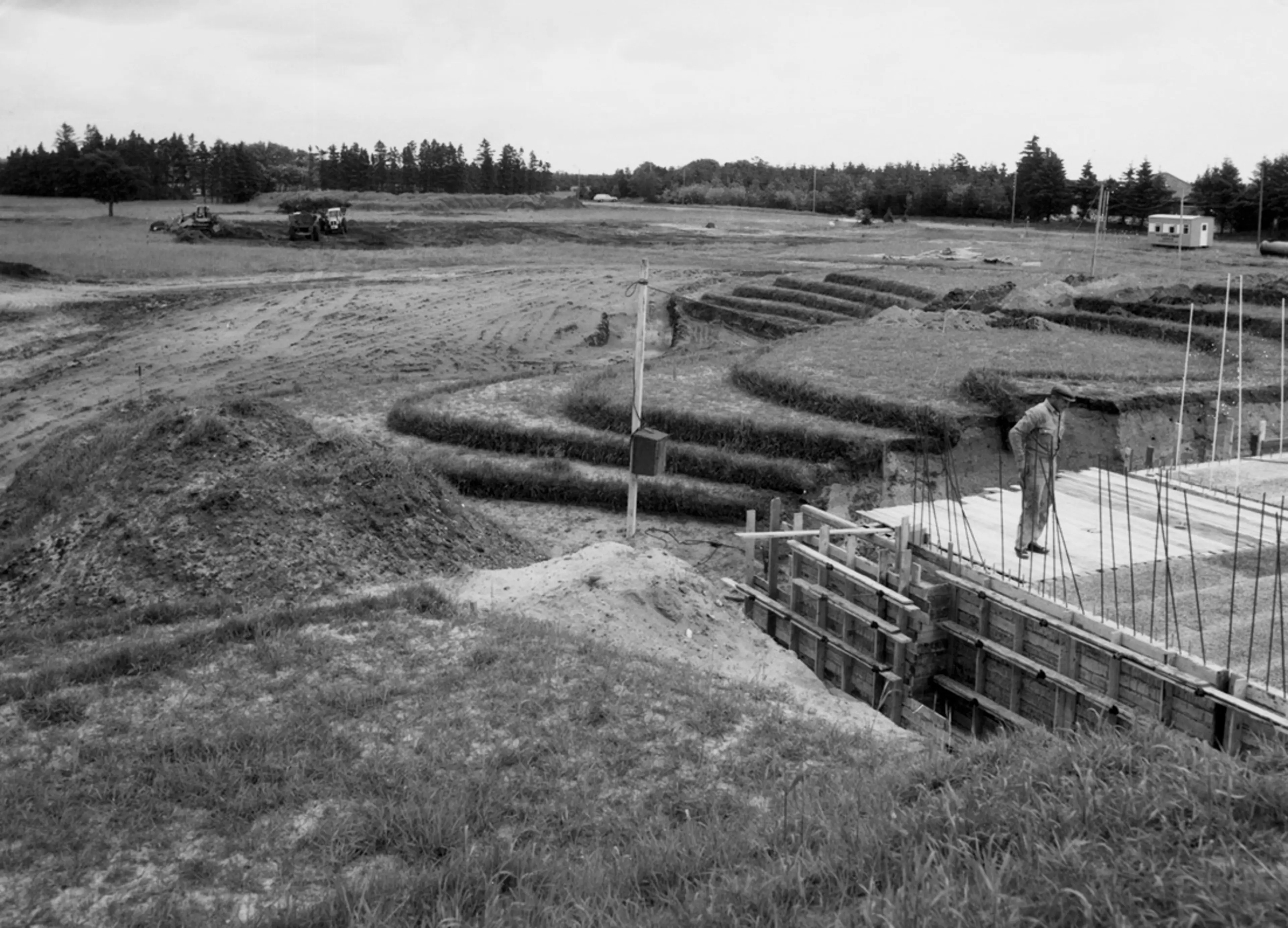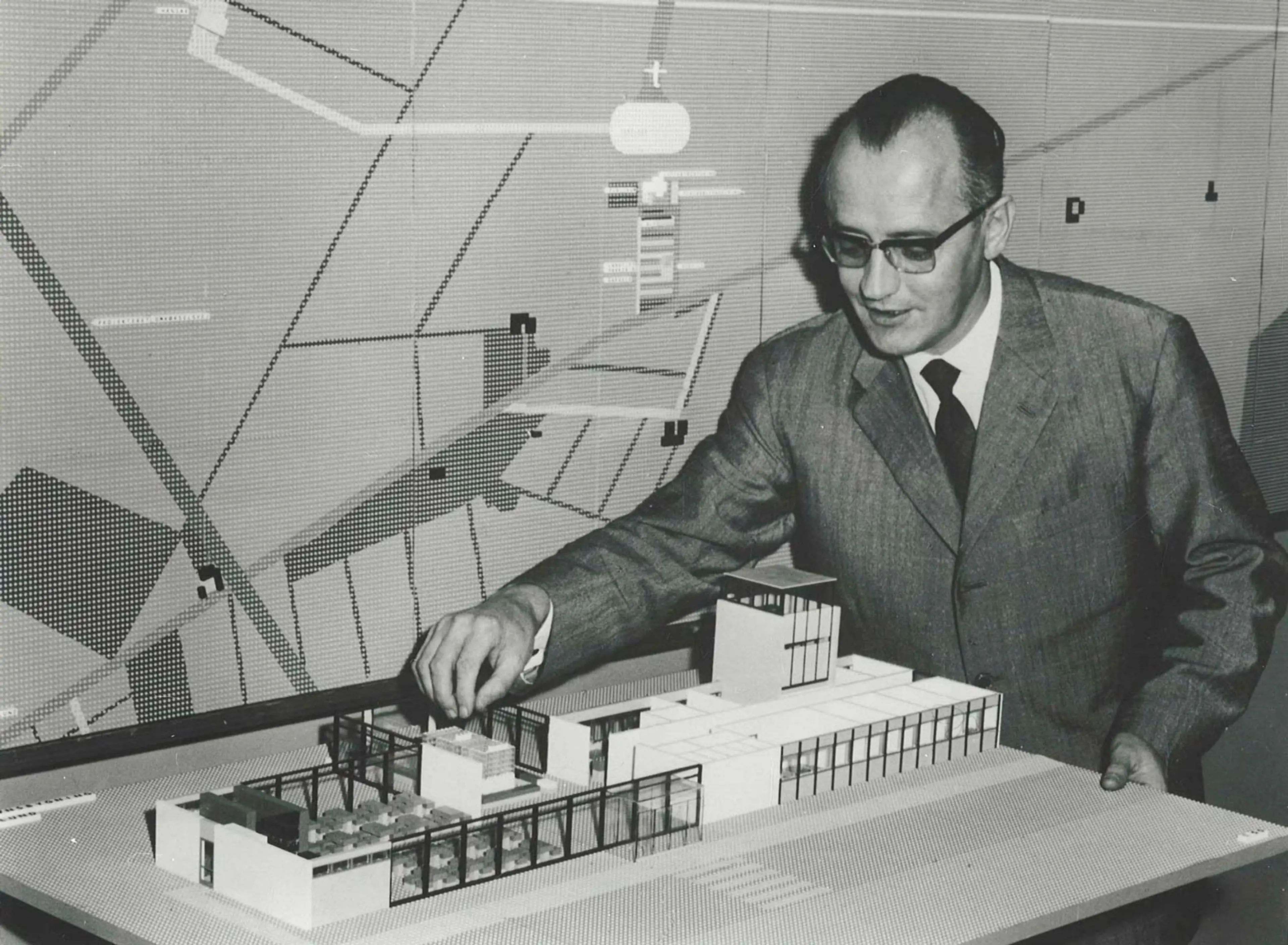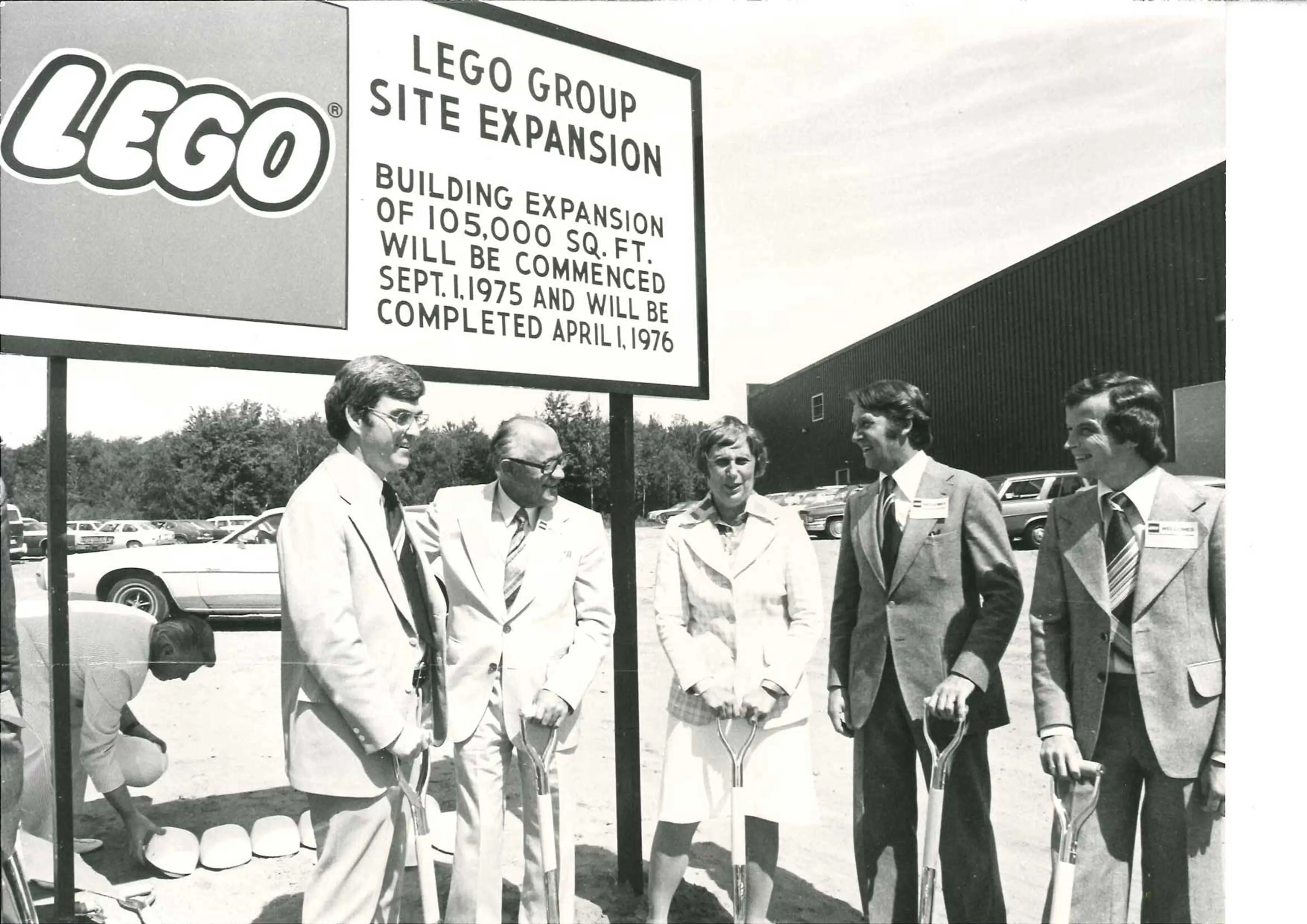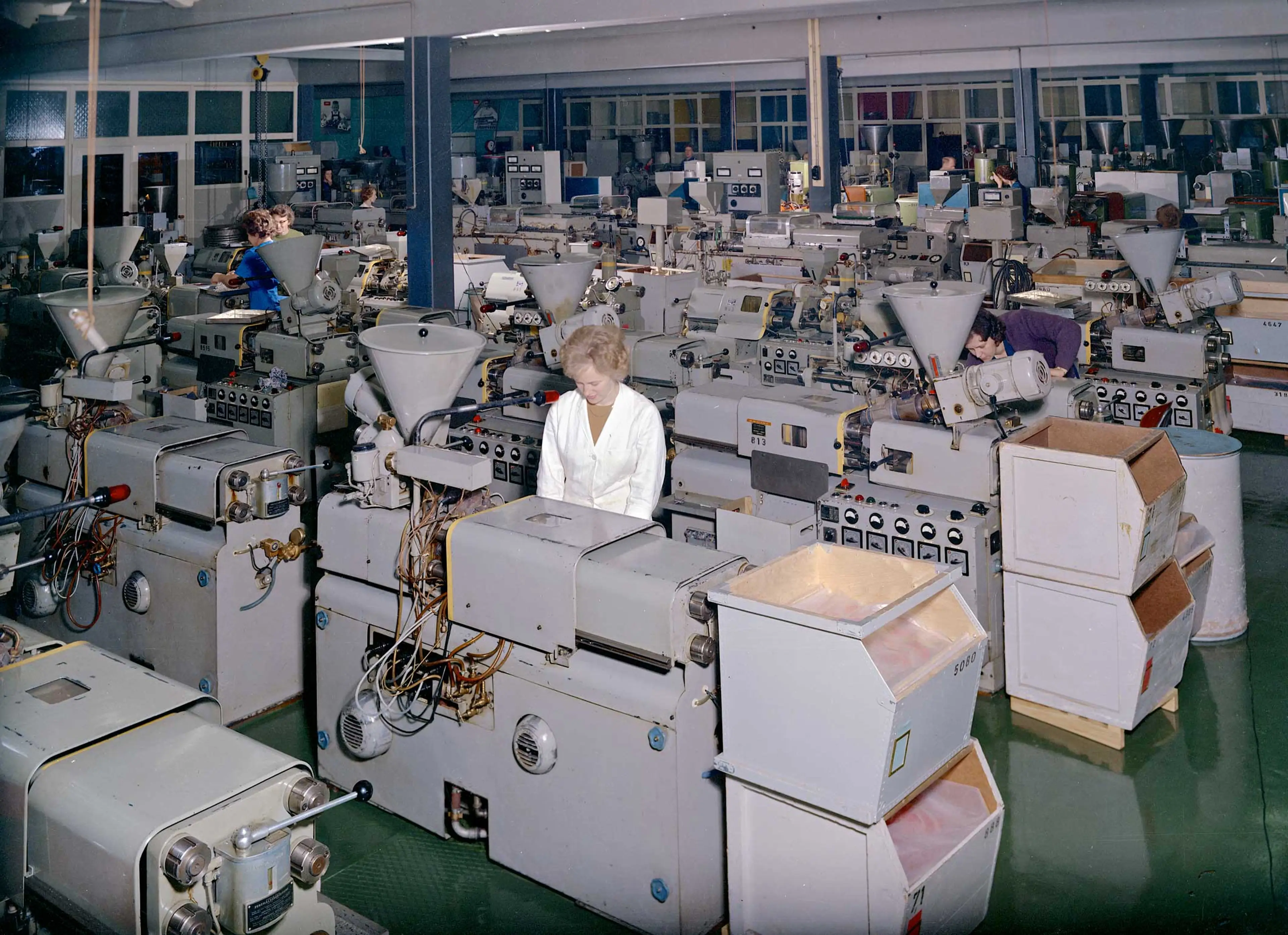In 1965, 10 years after launching the LEGO System in Play, heralding the idea of a toy system – the LEGO Group holds a significant part of the European market, with sales companies in many European countries. The big question now is: “How do we develop the LEGO System?”. An internal survey is conducted in 1965 to see where the LEGO system stands. The results are compared with the “10 LEGO characteristics” defined by Godtfred Kirk Christiansen in 1963:
- Unlimited play possibilities
- For girls, for boys
- Enthusiasm to all ages
- Play all year round
- Stimulating and harmonious play
- Endless hours of play
- Imagination, creativity, development
- More LEGO, multiplied play value
- Always topical
- Safety and quality
The survey reveals that quality has progressed by leaps and bounds, but it also shows a lopsided grouping of consumers in favor of younger children and boys. Referring once again to the 10 LEGO characteristics Godtfred Kirk Christiansen points out in 1966: “It’s important that we develop for more age groups and for both boys and girls. And in future we shall be putting more emphasis on play combined with the creative and constructive.” … Soon steps are made to do exactly that.
A new generation town plan
The original town plan theme, launched in 1955, is brought up to date and becomes the ideal setting for role and function play. The LEGOLAND line is introduced in 1970, clearly inspired by the LEGOLAND family park that opened in Billund in 1968. The park is also used to market the products, generating a clear synergy effect. The line introduces a new fleet of small vehicles and houses. Over the years the LEGOLAND line is divided into two new areas: cars and houses and later a third, ships, is introduced. The LEGOLAND name disappears in 1975 just to be reintroduced in 1978 when the line is further differentiated into three new themes: Town (absorbing the old LEGOLAND cars, houses and ships), Space and Castle. These themes are scaled to match the LEGO minifigure also launched in 1978 with the intent of increasing the element of roleplay. Coinciding with the minifigure, LEGO baseplates with studs and road markings etc. make their appearance to further adapt products to the LEGO System in Play idea – letting children create an environment that encourages more play.
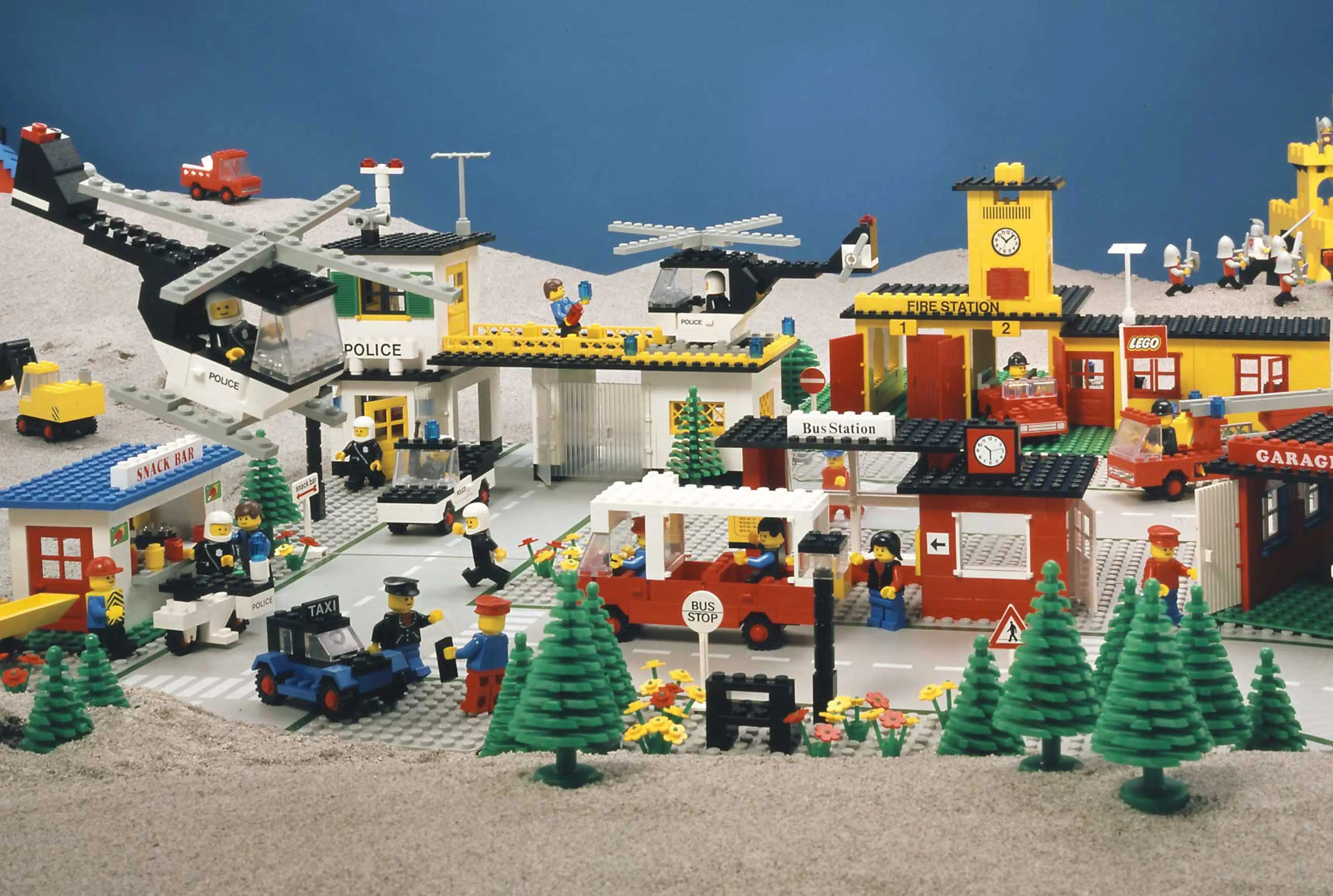
Various LEGOLAND Town sets from the late 1970s
The system expands
In the late 1960s, the LEGO System starts to expand. The company develops a large LEGO brick, which is ideal for small hands. Each of its dimensions is exactly twice that of a standard LEGO brick, inspiring the name of the new product: DUPLO, deriving from the Latin word duplex, which means “double”. Following a test launch in Sweden in 1968, LEGO DUPLO goes international in 1969. This broadens the company’s user group to include preschool children.
In 1977, the LEGO Group accommodates the needs of older children who are gradually finding it too easy to build with LEGO bricks. A new product is developed for the market: LEGO Technic. It is a little more complex to build, and the models usually incorporate technical functions – for example, a crane or similar piece of equipment.
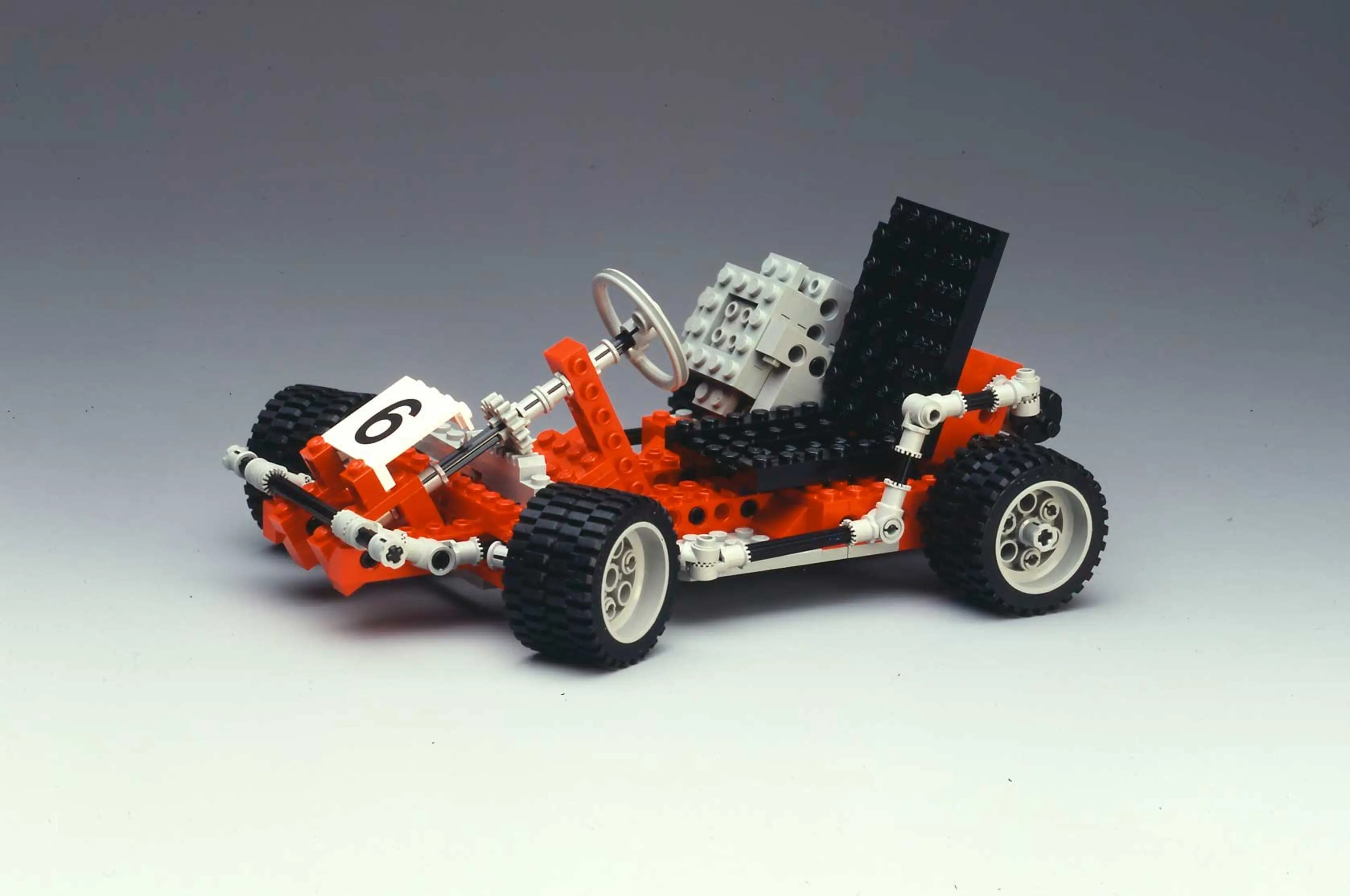
LEGO Technic Go-Kart, 1986
